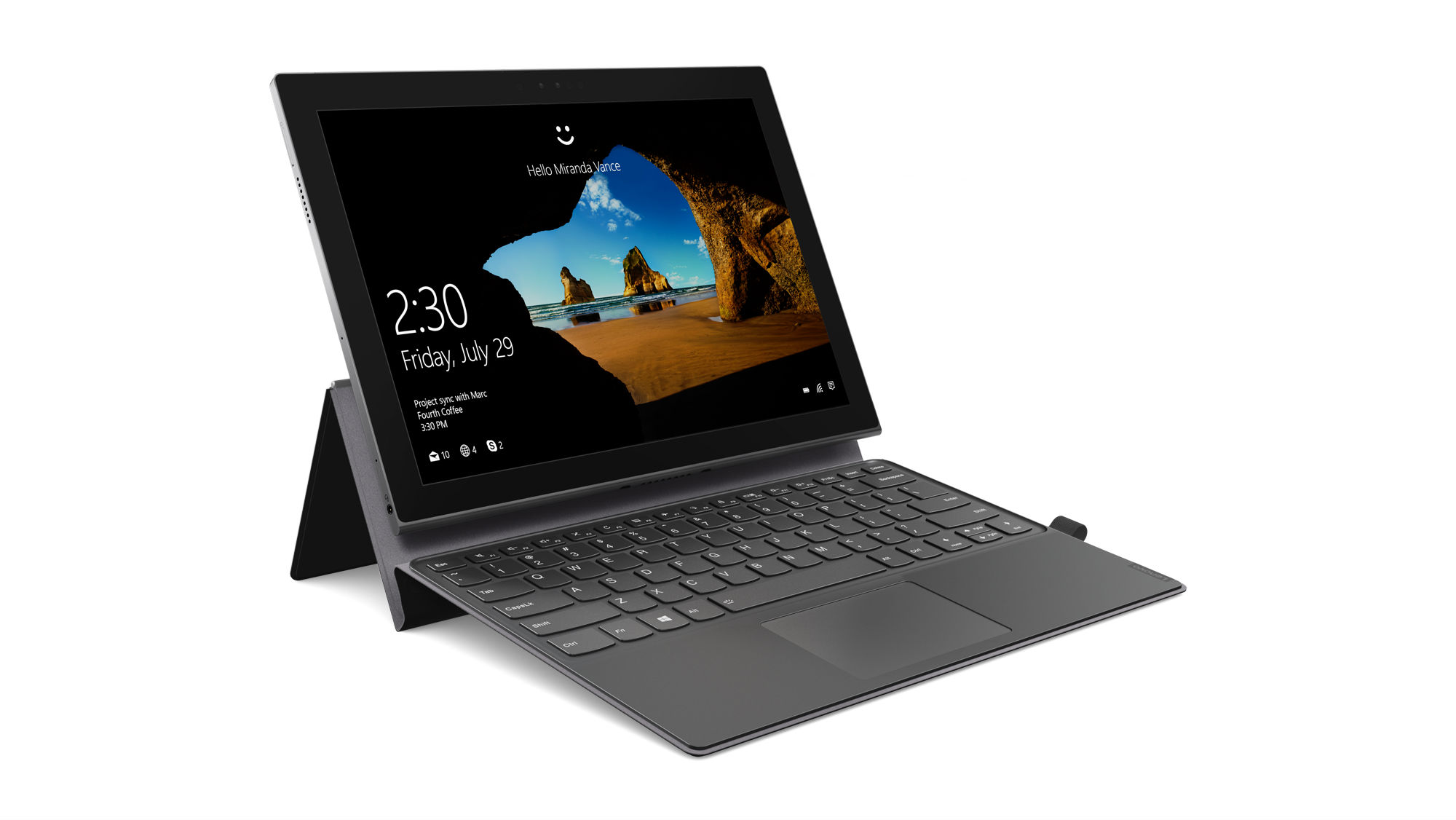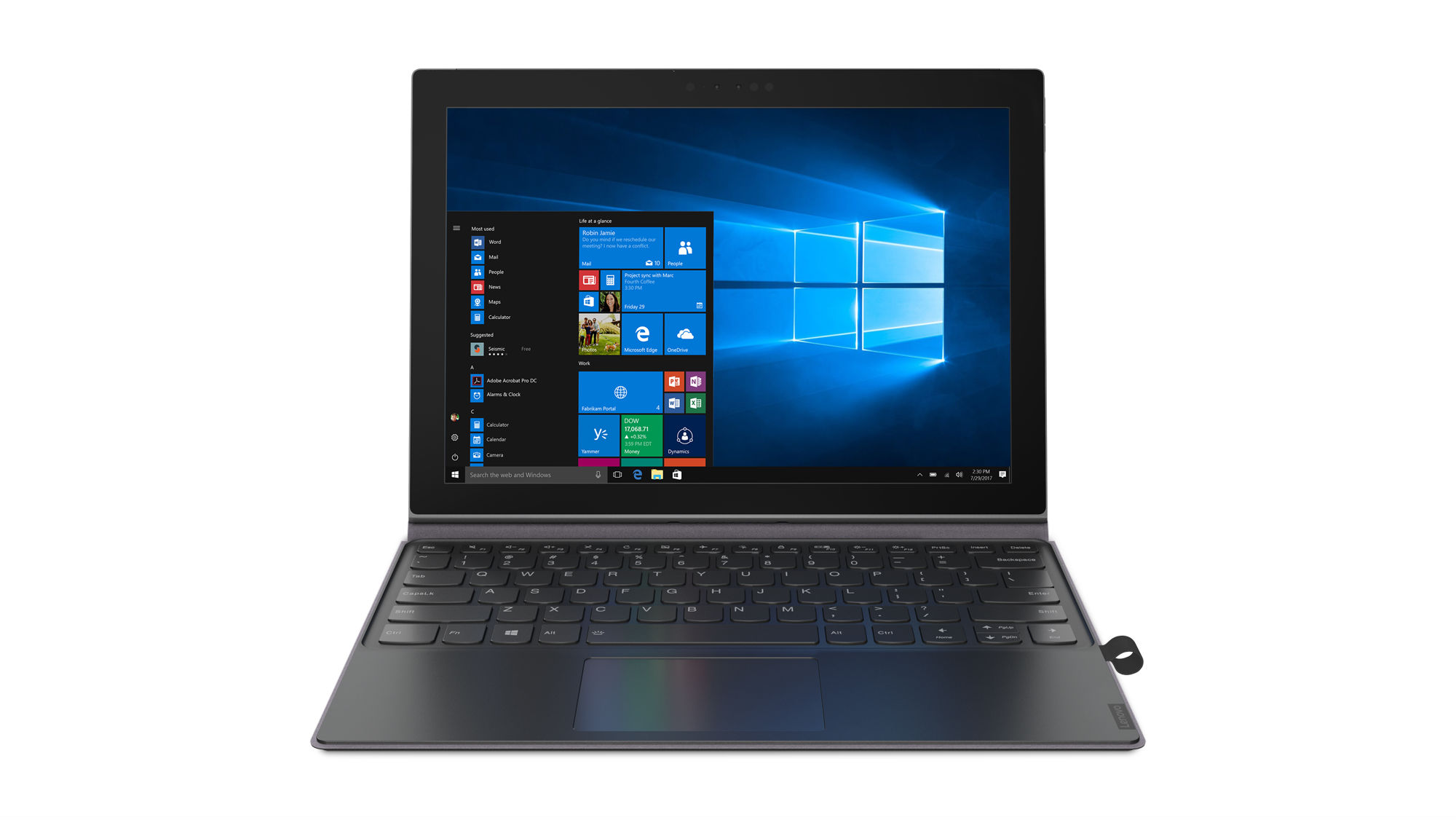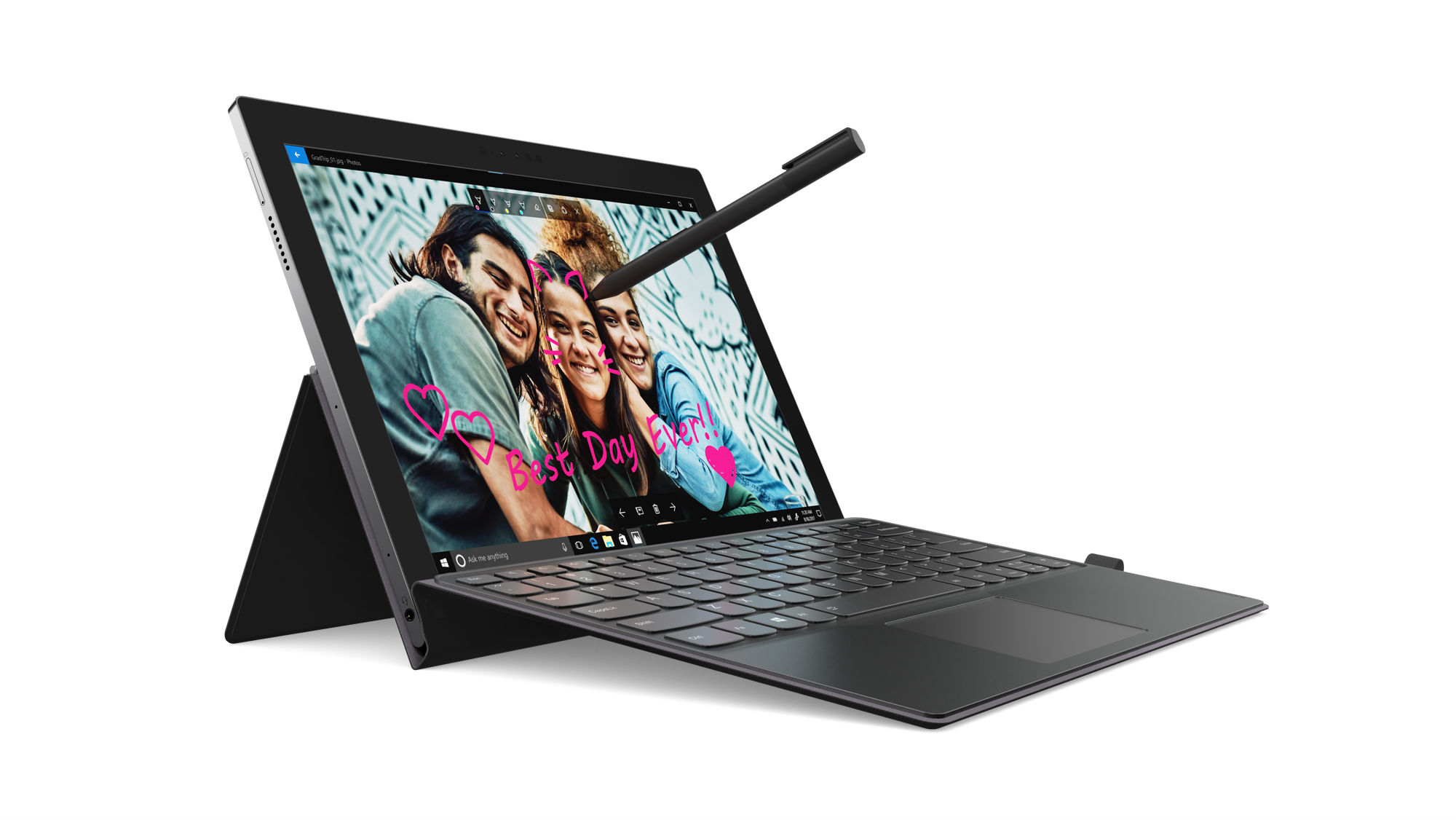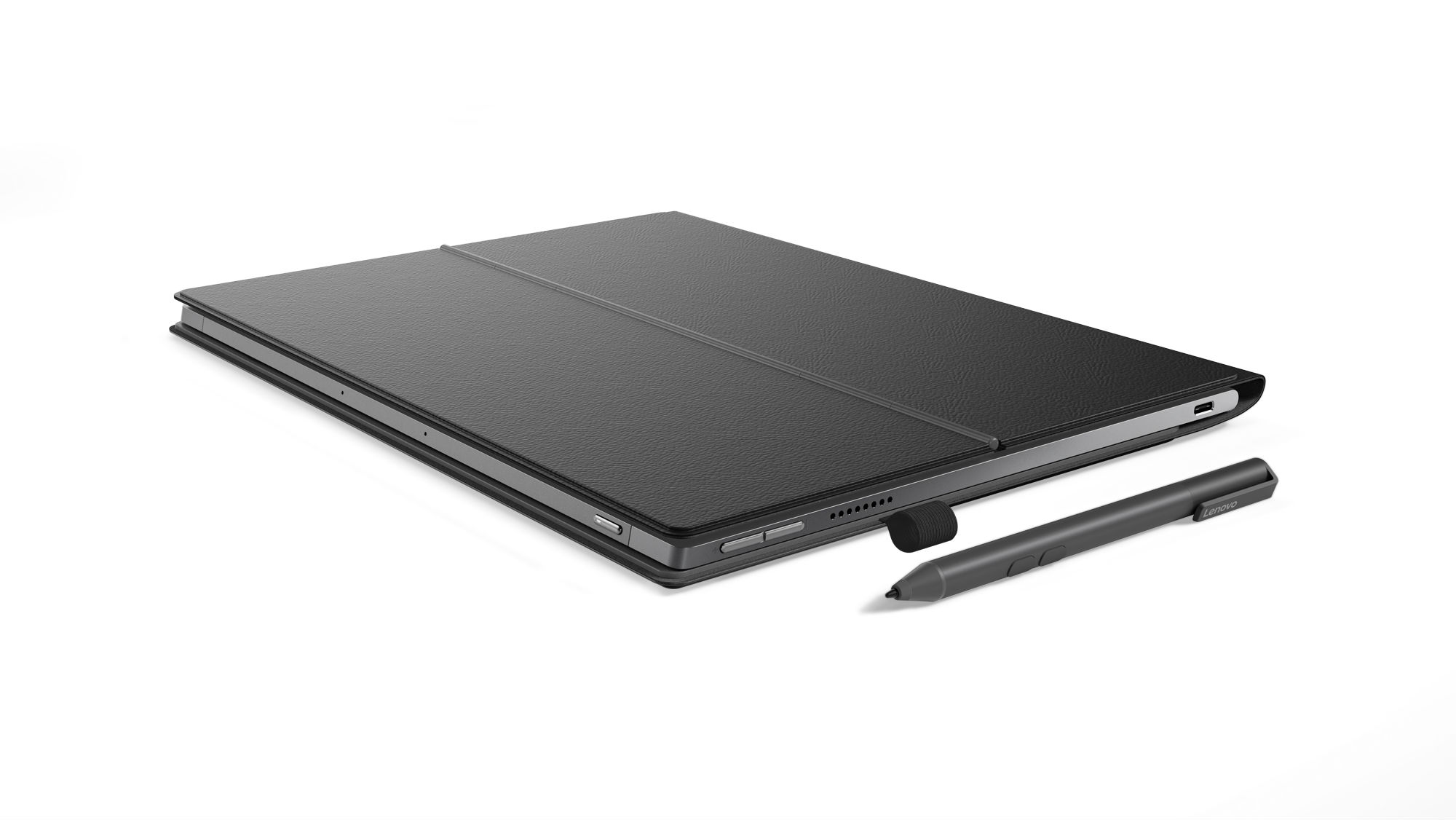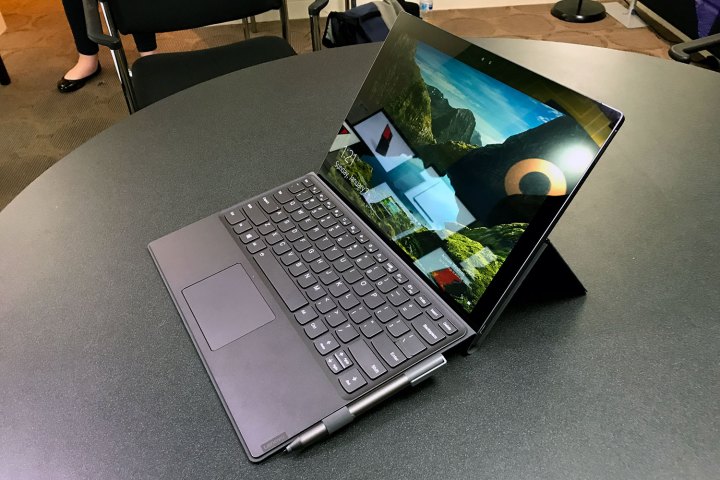
Lenovo is just the latest manufacturer to join in on the new “Always Connected PC” type of computers, which feature LTE connectivity and 20-plus hours of battery life. The Miix 630 falls in with Lenovo’s line of other 2-in-1 Windows PCs that feature a detachable keyboard, including the Surface Pro, for example.
Key Specs
- Qualcomm Snapdragon 835
- Integrated Adreno 540
- 12.3-inch 1920 x 1280 display
- Built-in LTE connectivity
- 0.6 inches thin, 2.9 pounds (with keyboard)
- 20 hours of video playback battery life
- Runs Windows 10 S
- Available in first quarter of 2018
What sets it apart from Lenovo’s other 2-in-1 PCs is, of course, the Snapdragon 835. While you might not get the best performance out of it, the Qualcomm CPU does offer a huge benefit — a claimed 20 hours of battery life. That’s a solid 12 hours more than the Lenovo’s Miix 720, a more expensive 2-in-1 with an Intel processor.
The Miix 630 is also the latest 2-in-1 to come with Windows 10 S installed. Previously only featured on the Surface Laptop, Windows 10 S is a slightly pared-down version of Windows 10 Home. The only significant difference is that with Windows 10 S, you can only install applications from the Microsoft Store. Lenovo is, however, offering a free upgrade to Windows 10 Pro for those who want to unshackle their PCs.
The Miix 630 comes with memory options of either 4GB or 8GB and storage options of either 128GB of 256GB. Other features include a backlit keyboard, an included stylus with 1,024 levels of sensitivity, and a 13MP, auto-focusing IR camera on the back.
At $800, the Miix 630 lands somewhere between the other two Always Connected PCs out there: The $600 Asus NovaGo and the expensive (though currently unpriced) HP Envy X2. Lenovo’s entry fills out the gamut of pricepoints for these Qualcomm-powered PCs.
Although the Miix 630 will be compatible with select local carriers, we still don’t know how much it will cost to add these devices to current data plans. The Miix 630 will be available sometime during the second quarter of 2018.
Update: We’ve published our thoughts on it in our hands-on review as well as how it compares to the HP Envy X2.
Editors' Recommendations
- Lenovo tweaks design and powers up its excellent Legion 5 Pro gaming laptops
- Snapdragon 8cx Gen 2: Qualcomm’s second attempt at outmuscling Intel on PCs
